DIY Homemade Dog Shampoo Recipe
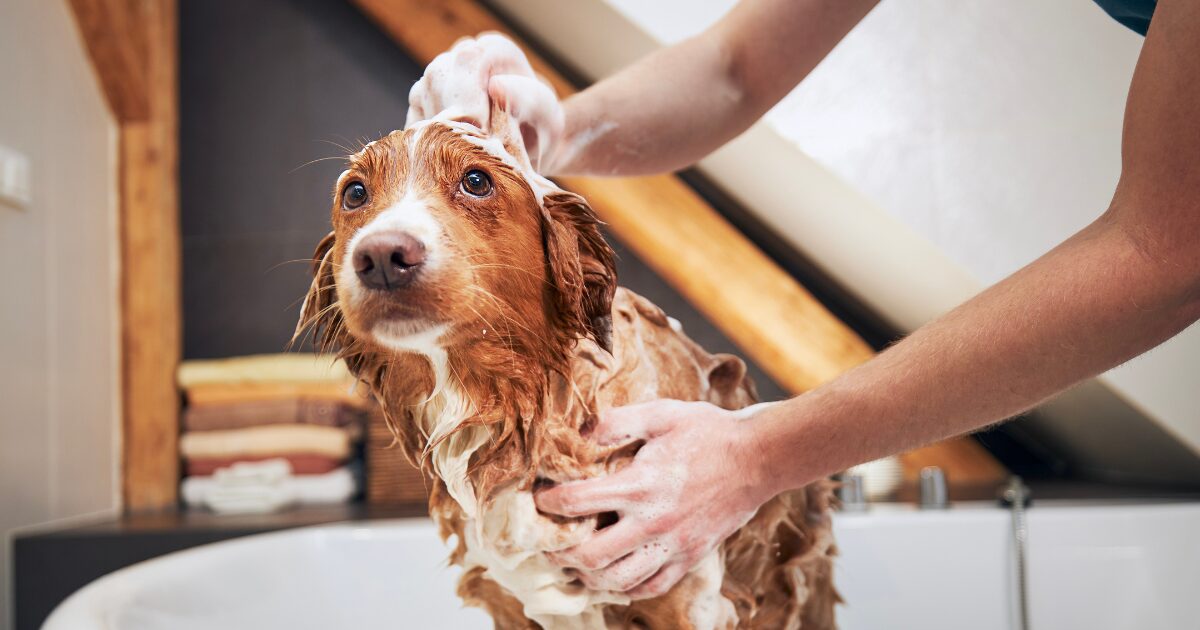
Introduction
If you’ve ever had a dog with sensitive skin, you know how challenging it can be to find the right grooming products that will soothe their discomfort without causing further irritation. Traditional commercial dog shampoos often contain harsh chemicals, fragrances, and sulfates that can trigger allergic reactions, dry out the skin, or leave your dog scratching and uncomfortable.
But don’t worry—there’s a solution that’s not only gentle on your dog’s skin but also effective and affordable. Homemade dog shampoo is the answer! By using natural ingredients, you can create a personalized shampoo that is perfectly suited for your dog’s skin type, whether they have dry, itchy, or sensitive skin. Plus, making your own dog shampoo at home allows you to avoid harmful chemicals while saving money and being more eco-friendly.
In this article, we’ll dive deep into the benefits of homemade dog shampoo, the best ingredients to choose for your pup, five simple recipes to try, and natural alternatives to harsh chemical ingredients. By the end of this guide, you’ll be ready to pamper your dog with a soothing bath that leaves them feeling fresh, comfortable, and smelling great. Let’s get started!
Why DIY Homemade Dog Shampoo Recipe is the Best Solution for Sensitive Skin
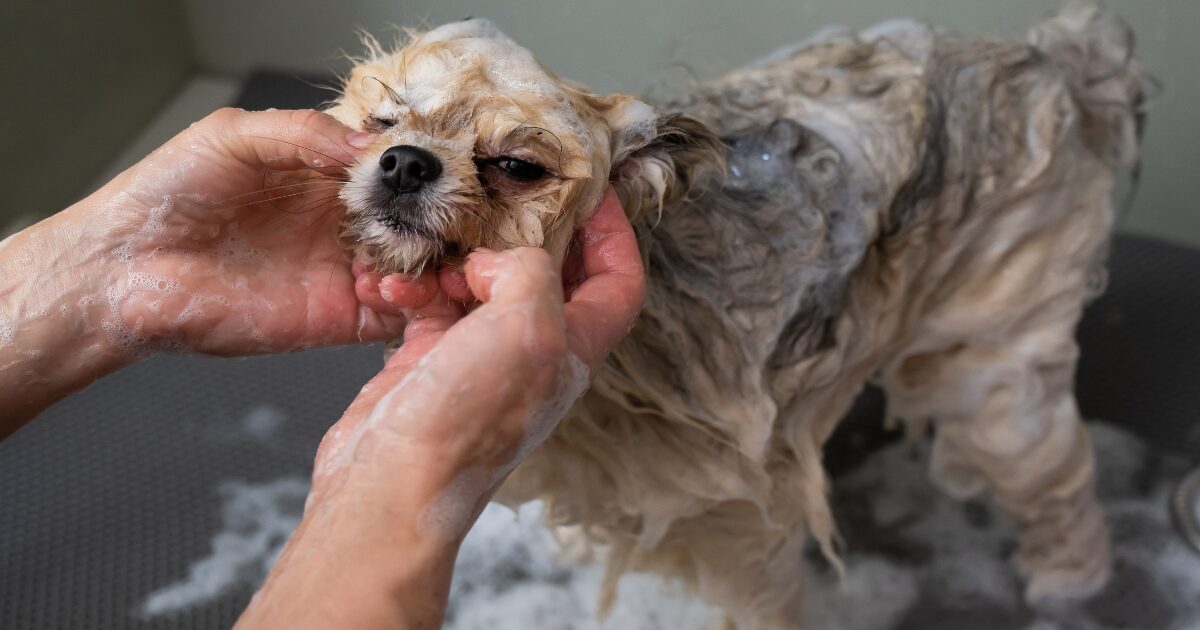
The Problem with Commercial Dog Shampoos
When it comes to sensitive skin, commercial dog shampoos are often loaded with artificial fragrances, dyes, and harsh chemicals like sulfates and parabens that can cause more harm than good. These ingredients strip away your dog’s natural oils, leaving their skin dry, irritated, and prone to infections. For pets with sensitive skin, these commercial products may trigger allergies or exacerbate existing skin conditions, such as eczema, dry patches, or hot spots.
The Benefits of Going Natural
The good news is that homemade dog shampoo is a natural, gentle alternative that you can customize to suit your dog’s specific needs. Unlike store-bought options, homemade shampoos allow you to select the ingredients, ensuring they are all-natural, safe, and non-irritating. Ingredients like aloe vera, oatmeal, and coconut oil are naturally soothing, anti-inflammatory, and moisturizing, making them perfect for calming dry or itchy skin.
Hypoallergenic and Customizable Formulas
One of the greatest advantages of using homemade dog shampoo is that it can be made with hypoallergenic ingredients that help to reduce the risk of allergic reactions. For dogs prone to skin sensitivities, you have full control over what goes into the shampoo, ensuring no harsh chemicals, fragrances, or dyes will cause harm. You can also adjust the recipe to include additional soothing properties, such as lavender oil for calming effects or chamomile for its anti-inflammatory benefits.
Tailored to Your Dog’s Skin Type
Additionally, homemade shampoos can be made to suit a variety of skin types. If your dog has oily skin, you can use ingredients like apple cider vinegar to help balance oils and eliminate bacteria. For dogs suffering from dry or flaky skin, honey, olive oil, or oatmeal can provide moisture and nourishment. This level of customization is simply not possible with mass-produced dog shampoos, which are typically formulated for the “average” dog and may not take into account the unique needs of your pet’s skin.
Eco-Friendly and Sustainable Choice
Aside from being safer and more tailored to your dog’s needs, homemade dog shampoo is a more environmentally friendly choice. Many commercial dog shampoos are packaged in plastic bottles that end up in landfills, contributing to environmental pollution. By making your own shampoo at home, you can reduce packaging waste, and you can even store your homemade shampoo in reusable containers, further reducing your environmental footprint.
Budget-Friendly for Pet Owners
Finally, making your own dog shampoo is a cost-effective solution for pet owners. High-quality commercial dog shampoos can be expensive, especially if you’re constantly searching for the right formula for your dog’s sensitive skin. Homemade dog shampoo ingredients are affordable, and with just a few basic items, you can create multiple batches that will last for months. Plus, you won’t have to worry about constantly replacing expensive store-bought products.
How to Choose the Right Ingredients for Your Homemade Dog Shampoo
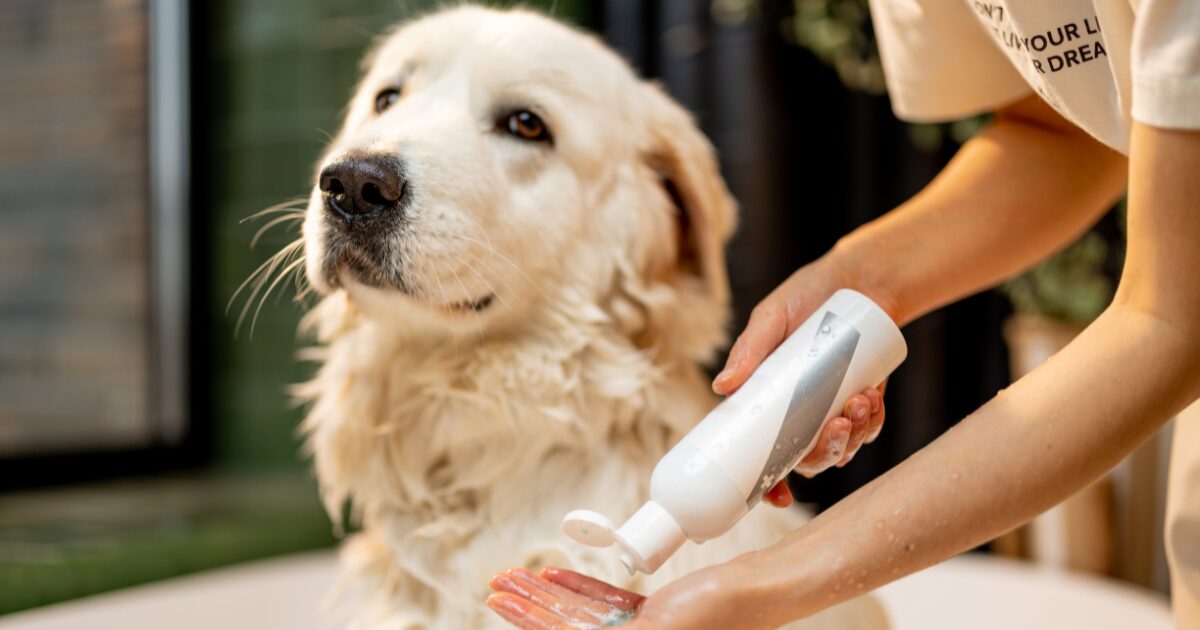
Selecting the right ingredients for your homemade dog shampoo is crucial to ensure it’s both effective and safe for your dog’s skin. Not all natural ingredients are suitable for every dog, so it’s important to consider their specific skin type and any allergies or sensitivities they may have. Below, we’ll take a closer look at some of the best ingredients to include in your homemade dog shampoo and explain their benefits.
1. Oatmeal
Oatmeal is a powerhouse ingredient for dogs with sensitive skin. It has been used for centuries as a natural remedy for skin irritation, dry patches, and inflammation. Oatmeal is known for its anti-inflammatory properties, which can soothe itching and calm redness. Ground oatmeal is gentle on the skin, providing a mild exfoliation that helps remove dead skin cells without irritating the skin. It also acts as a humectant, which means it attracts moisture to the skin, making it ideal for dogs with dry or flaky skin. Simply grind rolled oats into a fine powder and mix them into your homemade dog shampoo for a soothing, moisturizing effect.
2. Aloe Vera
Aloe vera is another fantastic ingredient for homemade dog shampoo, especially for dogs with dry, irritated, or inflamed skin. It has natural anti-inflammatory and cooling properties that can reduce redness and swelling, making it an excellent choice for dogs suffering from allergies, sunburn, or minor cuts and scrapes. Aloe vera also helps to hydrate the skin, providing relief from dryness and itching. It can speed up the healing process of skin irritations and improve the overall appearance of your dog’s coat. Make sure to use pure, organic aloe vera gel to avoid any added chemicals or fragrances.
3. Coconut Oil
Coconut oil is a popular ingredient in homemade dog shampoo recipes due to its many benefits for skin and coat health. It contains medium-chain fatty acids that help to moisturize and nourish the skin. Coconut oil has antibacterial, antifungal, and antiviral properties, making it an excellent choice for dogs with skin infections or hot spots. It also helps to restore the natural moisture barrier of the skin, preventing dryness and flakiness. Additionally, coconut oil is rich in antioxidants, which can protect the skin from damage caused by environmental factors. Just make sure to use virgin, cold-pressed coconut oil for the best results.
4. Castile Soap
Castile soap is a gentle, biodegradable, plant-based soap that’s ideal for homemade dog shampoo. It is free of synthetic chemicals, fragrances, and sulfates, making it perfect for dogs with sensitive skin. Castile soap cleanses without stripping the skin of its natural oils, and it creates a light lather that is easy to rinse off. You can find Castile soap in liquid or bar form, and it comes in various scents, though it’s best to choose an unscented version if you’re concerned about fragrances. Castile soap is non-toxic and safe for dogs, so it’s a great option to use in your homemade shampoo recipes.
5. Apple Cider Vinegar
Apple cider vinegar is a versatile and natural ingredient that can be used in homemade dog shampoo to balance the pH level of your dog’s skin. It has antibacterial and antifungal properties that can help combat skin infections or prevent the growth of yeast. Apple cider vinegar also acts as a natural deodorizer, leaving your dog smelling fresh and clean without the need for artificial fragrances. If your dog has a strong odor or struggles with yeast-related issues like smelly ears, incorporating apple cider vinegar into their shampoo can provide relief.
5 Simple Homemade Dog Shampoo Recipes for Every Skin Type
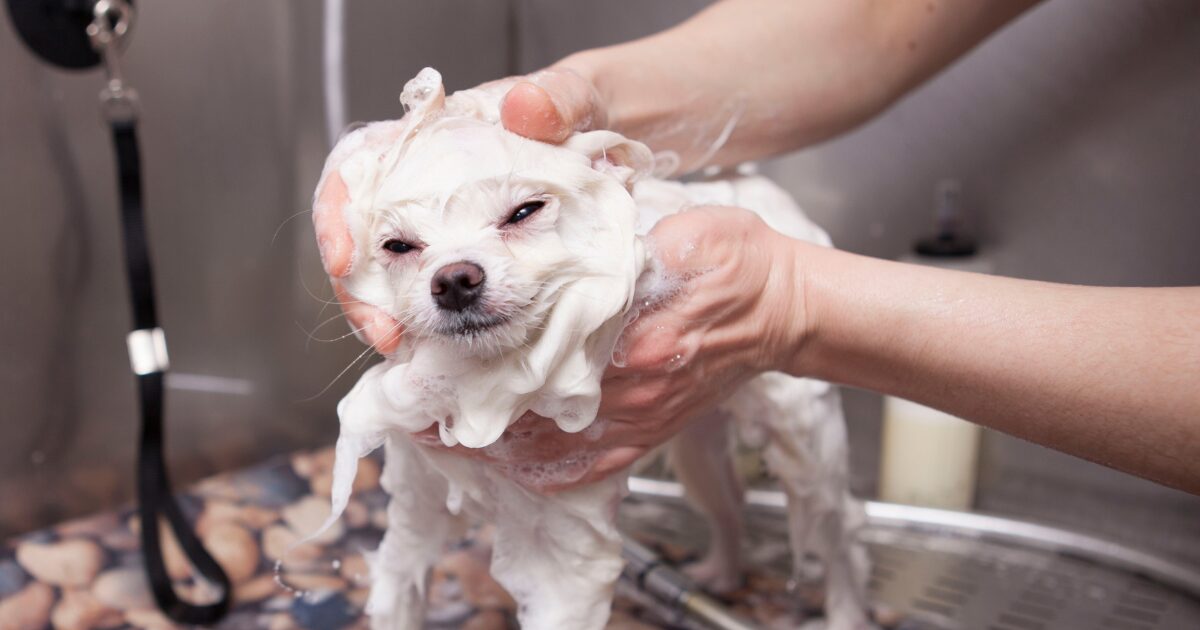
Now that you know the best ingredients for homemade dog shampoo, let’s dive into some easy recipes you can try at home! Each of these recipes is designed to address a different skin concern and will leave your dog feeling clean, soft, and comfortable.
1. Oatmeal & Aloe Vera Shampoo for Dry Skin
This soothing shampoo is perfect for dogs with dry, flaky, or irritated skin. The oatmeal helps to relieve itching, while the aloe vera soothes inflammation and provides moisture.
Ingredients:
- 1 cup of ground oatmeal
- 2 tablespoons of aloe vera gel
- 1/4 cup of coconut oil
- 1 cup of water
Directions: Grind the oatmeal into a fine powder and mix with the aloe vera gel, coconut oil, and water. Stir until everything is well combined. Apply the mixture to your dog’s coat and gently massage it into the skin. Let it sit for a few minutes to allow the ingredients to work their magic, then rinse thoroughly. Your dog will love the soothing sensation!
2. Coconut & Castile Soap Shampoo for Itchy Skin
If your dog is constantly scratching and itching, this shampoo will help calm their skin while providing a gentle cleanse. The coconut oil moisturizes the skin, while Castile soap offers a mild cleanse without stripping the natural oils.
Ingredients:
- 1/2 cup of Castile soap
- 1/4 cup of coconut oil
- 1 tablespoon of apple cider vinegar
- 1 cup of water
Directions: Combine the Castile soap, coconut oil, apple cider vinegar, and water in a bottle. Shake well to mix. Use this shampoo to lather up your dog’s coat, massaging it into the skin. Rinse thoroughly, and enjoy the calming effects of this natural shampoo.
3. Natural Lavender & Chamomile Shampoo for Sensitive Skin
Lavender and chamomile are two of the most calming and soothing ingredients for both humans and pets. This shampoo is gentle on your dog’s sensitive skin and offers a relaxing scent, making bath time a stress-free experience.
Ingredients:
- 1/2 cup of Castile soap
- 2 tablespoons of dried chamomile flowers (or 2 tablespoons of chamomile tea)
- 5 drops of lavender essential oil
- 1 cup of water
- 1 tablespoon of coconut oil
Directions:
Begin by brewing a strong chamomile tea using dried chamomile flowers or store-bought tea bags. Once the tea has cooled, mix it with the Castile soap, coconut oil, and lavender essential oil in a bottle. Shake well to combine. Use this soothing shampoo to wash your dog’s skin and coat, ensuring to massage it in gently to avoid irritation. Chamomile and lavender will help reduce any redness or inflammation, while the coconut oil will hydrate the skin, leaving your dog smelling fresh and feeling relaxed.
4. Apple Cider Vinegar & Baking Soda Shampoo for Oily Skin
For dogs that tend to have oily skin or a greasy coat, this homemade dog shampoo will help restore balance by absorbing excess oils and cleaning without over-drying. Apple cider vinegar works as a natural degreaser, and baking soda helps neutralize odors and remove dirt.
Ingredients:
- 1 tablespoon of baking soda
- 1/2 cup of apple cider vinegar
- 1 cup of warm water
Directions:
Mix the baking soda, apple cider vinegar, and water in a bottle or bowl. Apply the mixture to your dog’s coat and massage gently, allowing the ingredients to break down oils and dirt. Rinse thoroughly. If your dog has especially oily skin or a strong odor, repeat the process. This simple, effective recipe will leave your dog feeling clean, fresh, and balanced.
5. Honey & Olive Oil Shampoo for Dry Skin and Dandruff
Honey and olive oil are both deeply nourishing ingredients for homemade dog shampoo that target dry, flaky skin. Honey is naturally antibacterial and humectant, helping to keep the skin moisturized, while olive oil hydrates and adds shine to the coat. This recipe is perfect for dogs that suffer from dandruff or dry patches.
Ingredients:
- 1/4 cup of honey
- 1/4 cup of olive oil
- 1 cup of water
- 1/4 cup of Castile soap
Directions:
Combine honey, olive oil, and water in a mixing bowl and stir until well combined. Add the Castile soap and mix gently. Apply the shampoo to your dog’s coat and massage into the skin. Honey’s moisturizing properties will soothe and hydrate, while the olive oil will provide a protective barrier against dryness. Rinse well to leave your dog with soft, nourished skin and a shiny coat.
Natural Alternatives to Common Dog Shampoo Ingredients for Sensitive Skin
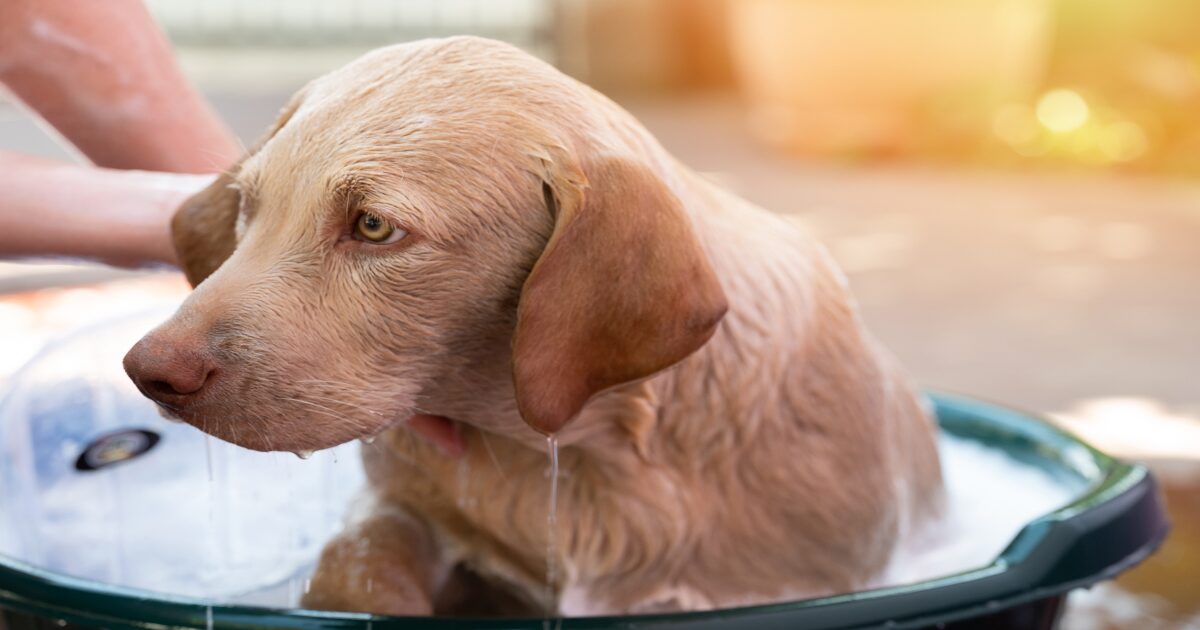
When it comes to homemade dog shampoo, it’s important to avoid certain ingredients commonly found in commercial dog shampoos that can trigger sensitivities or allergies in pets. Many off-the-shelf products contain artificial fragrances, sulfates, parabens, and other chemicals that can strip away your dog’s natural oils and irritate their skin. Here, we’ll explore natural alternatives to some of the most common synthetic ingredients found in dog shampoos.
1. Artificial Fragrances → Essential Oils
Many commercial dog shampoos use artificial fragrances to give your pet a fresh smell, but these fragrances are often made with synthetic chemicals that can irritate sensitive skin. Instead of synthetic fragrances, consider using natural essential oils such as lavender, chamomile, or peppermint. These oils not only smell amazing but also offer therapeutic benefits for your dog’s skin. For example, lavender oil is calming and anti-inflammatory, while peppermint oil can provide a cooling sensation and help to repel insects.
However, it’s important to use essential oils sparingly and avoid oils like tea tree oil, which can be toxic to dogs if used in large amounts. Always dilute essential oils properly and consult your vet if you have concerns about specific oils.
2. Sulfates → Castile Soap or Aloe Vera
Sulfates are detergents commonly found in commercial shampoos that create a lather and help remove oils and dirt from the skin. However, sulfates can also strip away natural oils, leaving the skin dry and irritated. In homemade dog shampoo, you can use Castile soap as a gentle alternative to sulfates. Castile soap is made from plant oils and provides a mild lather without the drying effects of sulfates.
Aloe vera is another excellent alternative, as it cleanses and soothes without disrupting the skin’s natural barrier. It also helps to hydrate the skin and reduce irritation, making it a great option for sensitive skin.
3. Parabens → Natural Preservatives
Parabens are synthetic preservatives used in many commercial shampoos to prevent bacterial growth and extend shelf life. While they are generally safe in small amounts, parabens have been linked to hormone disruption and skin irritation in some studies. For homemade dog shampoo, you don’t need harsh preservatives. Instead, you can make smaller batches of shampoo that can be used up quickly. To prolong the shelf life of your homemade shampoo, you can add a few drops of vitamin E oil, which acts as a natural preservative and is beneficial for the skin.
4. Dyes → Natural Colorants
Many commercial dog shampoos contain artificial dyes that are added to make the product more visually appealing. These dyes, however, can cause allergic reactions or sensitivities in some dogs. To avoid this, use homemade dog shampoo ingredients that are naturally colorless, or you can add natural colorants like turmeric for a golden hue or spirulina for a light green tint. These natural colorants are safe and non-toxic for dogs, ensuring a safer bath time experience.
How to Safely Use Homemade Dog Shampoo on Your Pet for Maximum Benefits
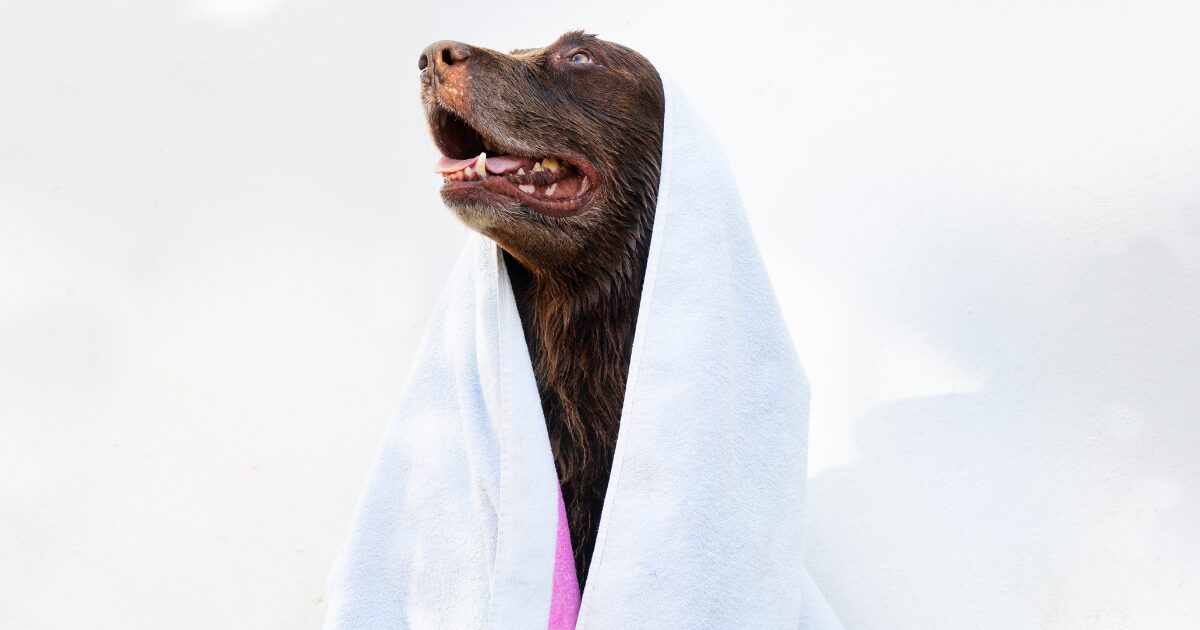
Using homemade dog shampoo is a great way to pamper your dog, but it’s important to follow certain guidelines to ensure a safe and effective bath time. Here are some tips on how to get the most out of your homemade shampoo and keep your dog’s skin and coat healthy.
1. Patch Test First
Before using any new shampoo on your dog, it’s always a good idea to perform a patch test. Apply a small amount of the shampoo to a small area of your dog’s skin, such as the inside of their leg or under their belly. Wait 24 hours to see if any signs of irritation, redness, or swelling develop. If everything looks good, you can proceed with the bath.
2. Don’t Over-Bathe Your Dog
While regular grooming is important for your dog’s health, over-bathing can actually dry out their skin and strip away essential oils. For most dogs, a bath every 4 to 6 weeks is sufficient. If your dog has a particularly oily or smelly coat, you can bathe them more frequently, but always be sure to moisturize their skin afterward to prevent dryness.
3. Use Lukewarm Water
Always bathe your dog with lukewarm water. Water that is too hot or too cold can cause discomfort and stress your dog out during bath time. Lukewarm water is the most soothing for your dog’s skin and allows the shampoo to work its magic without causing any shock to their body temperature.
4. Rinse Thoroughly
When using homemade dog shampoo, it’s essential to rinse thoroughly. Leaving shampoo residue on your dog’s skin can cause irritation, dryness, or even a rash. Make sure to wash away all the shampoo, paying extra attention to areas like the paws, belly, and neck.
5. Dry Gently
After the bath, gently towel dry your dog, being careful not to rub too harshly, as this can irritate the skin. If your dog tolerates it, you can also use a blow dryer on a low, cool setting to help dry their coat. Avoid using high heat, as this can dry out the skin and cause further irritation.
Conclusion

Creating your own homemade dog shampoo is a fantastic way to pamper your pet while taking care of their sensitive skin. By using natural ingredients like oatmeal, aloe vera, coconut oil, and Castile soap, you can provide your dog with a gentle, soothing bath that promotes healthy skin and a shiny coat. Whether your dog has dry, itchy, oily, or flaky skin, there’s a homemade shampoo recipe to suit their needs.
Say goodbye to harsh chemicals and expensive store-bought products, and try out these simple, effective DIY recipes at home! Your dog will thank you with a wagging tail and a happy, healthy coat.
For more information on caring for your pet’s health and wellness, visit https://thepawshub.com/.